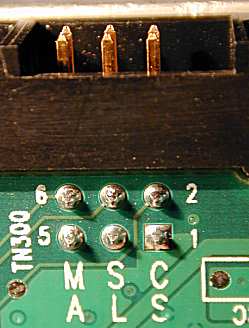[ The PC Guide | Systems and Components Reference Guide | Hard Disk Drives | Construction and Operation of the Hard Disk | Hard Disk Connectors and Jumpers ]
IDE/ATA Configuration Jumpers
IDE/ATA hard disks are fairly standard in terms of jumpers. There are usually only a few and they don't vary greatly from drive to drive. Here are the jumpers you will normally find:
- Drive Select: Since there can be two drives (master and slave) on the same IDE channel, a jumpers is normally used to tell each drive if it should function as a master or slave on the IDE channel. For a single drive on a channel, most manufacturers instruct that the drive be jumpered as master, while some manufacturers (notably Western Digital) have a separate setting for a single drive as opposed to a master on a channel with a slave. The terms "master" and "slave" are misleading since the drives really have no operational relationship. See this section on IDE/ATA jumpering for more.
- Slave Present: Some drives have an additional jumper that is used to tell a drive configured as master that there is also a slave drive on the ATA channel. This is only required for some older drives that don't support standard master/slave IDE channel signaling.
- Cable Select: Some configurations use a special cable to determine which drive is master and which is slave, and when this system is used a cable select jumper is normally enabled.
- Size Restriction Jumper: Some larger hard disk drives don't work properly in older PCs that don't have a BIOS program modern enough to recognize them. To get around this, some drives have special jumpers that, when set, will cause them to appear as a smaller size than they really are to the BIOS, for compatibility. For example, some 2.5 GB hard disks have a jumper that will cause them to appear as a 2.1 GB hard disk to a system that won't support anything over 2.1 GB. These are also sometimes called capacity limitation jumpers and vary from manufacturer to manufacturer. See here for more on this.
|
Jumper block for an IDE hard disk. |
See here for full details on IDE/ATA hard disk setup.
![]() Next: SCSI Configuration Jumpers
Next: SCSI Configuration Jumpers
| The PC Guide
(http://www.PCGuide.com) Site Version: 2.2.0 - Version Date: April 17, 2001 © Copyright 1997-2004 Charles M. Kozierok. All Rights Reserved. |
Not responsible for any loss resulting from the use of this site. Please read the Site Guide before using this material. |
